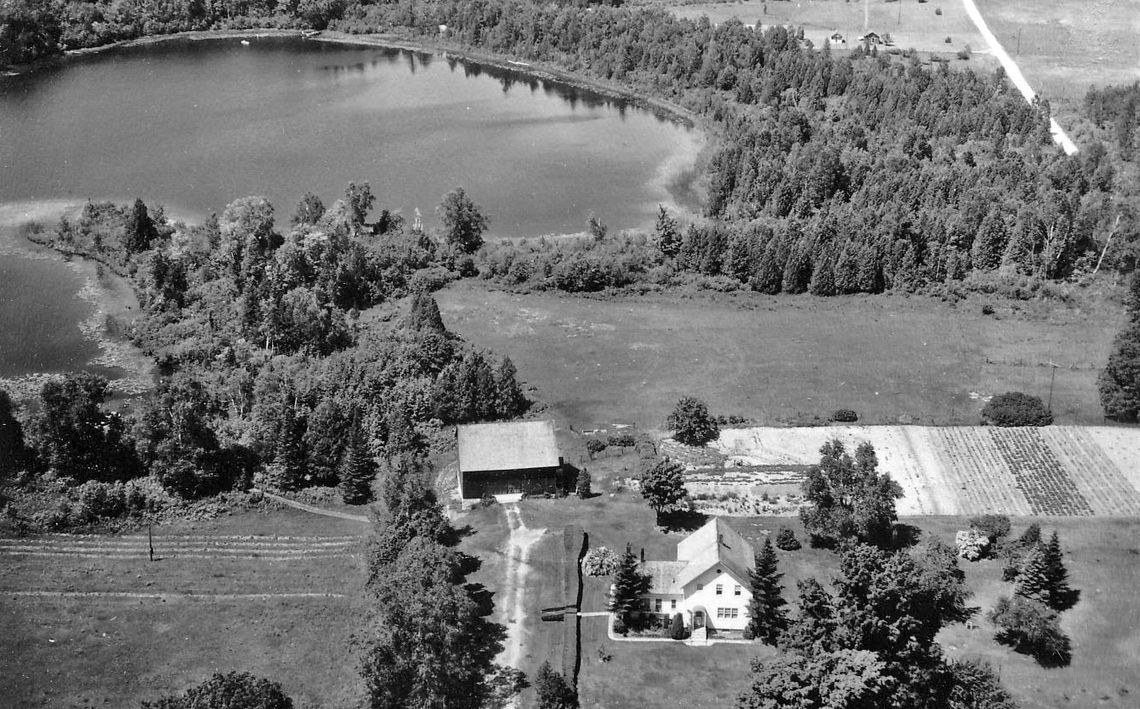This continues a series adapted from the book, “A Port Oneida Collection,” Volume 1 of the twopart set, “Oral History, Photographs, and Maps from the Sleeping Bear Region,” produced by Tom Van Zoeren in partnership with Preserve Historic Sleeping Bear. Here we continue with a look at the Goffar Farm, along M-22 on Lake Narada.
Regarding the dispute over ownership of the lake mentioned in the last installment, it seems to have arisen out of the informallyarranged sale of the property a few years earlier. As noted, the women of the two involved families were sisters who had been quite close. Olive and Milton Manney had often stayed with Ida and Albert Prause at their home (the “Goffar Farm”) during visits to the area when they lived in Chicago. When the Prauses took an opportunity to acquire the two farms north of the lake (which were better for agriculture), it seemed to make sense for the Manneys to buy the Goffar Farm from them to use as a northern lakeside retreat, close to friends and family.
However, this friendly informal deal did not include a land survey — and therein lay the seed of a problem. The Manneys thought they were getting the whole lake, which, with its good fishing, provided a promising site for a small resort. The Prauses’ new farm, however, included a small section of the shallow northern portion of the lake.
For some years the Prauses continued to use the lake just for occasional fishing, with no problem. Numerous friends & relatives also did so, with permission granted out of neighborliness; however, over time the Prauses apparently came to use it more, and to allow for its use by others. The Manneys were afraid that the small lake would become depleted of the treasured fish.
The dispute hardened, was tried in Circuit Court, and in 1929 went before the State Supreme Court. The Manneys both testifi ed that, as stated by Olive, “They told me the lake was all on the property we were buying. Both Mr. and Mrs. Prause told us the lake was all on the land we were buying. We believed it. We would not have thought of buying it if it had not been for that.”
The Prauses testified that, as stated by Albert, “I did not understand that they were buying it to get the lake. They bought the farm. They never asked me anything about the lines and no lines were shown them. I bought the place the Manneys have from my father. We never claimed to own the lake.”
The Manneys brought in a number of neighbors as witnesses who testified that the Goffars and the Prauses, before selling the property to the Manneys, always treated the lake as entirely their own, not allowing its use without permission. Jennie Burfiend stated, “I spent the first twenty years of my life on the property Mr. Manney owns. My father owned it. (His name was Goffar). I have always known the land. I am 62 and Father went on there before I can remember . . . My father claimed title to the lake and always treated it as a private lake.”
Since Prause Lake (as it was then known) is connected to Lake Michigan by Shalda Creek, part of the legal question involved whether the creek is “navigable.” A sailor might laugh at the notion of traveling down that tangled little creek; but legally, a waterway is considered navigable if it is passable by a canoe, or if it could even be used to float logs down. However, George Lawr testifi ed, “I live between a half and three-quarters of a mile from this lake. I have lived there 42 or 43 years. I never knew of any (railroad) ties or logs being floated down the outlet. I doubt if you could get a two-by-four down without pushing it.”
All of the outside witnesses who testified at the trial supported the Manneys in their claim that the lake had always been considered private and unavailable without permission. However, the judge issued this judgment: “Therefore, on due consideration thereof, it is ordered, adjudged and decreed, and this court doth herein order, adjudge and decree that the relief prayed for by the said plaintiffs (the Manneys) in their said bill of complaint is hereby denied and their said bill of complaint is hereby dismissed.
“And it is further ordered, adjudged and decreed that the said defendants, Albert Prause and Ida Prause, do recover from the said plaintiffs, Milton C. Manney and Olive Manney, their costs in the above case to be taxed, and that the said plaintiffs, Milton C. Manney and Olive Manney, pay to the said defendants, Albert Prause and Ida Prause, the amount of said costs when taxed, with interest.”
To be continued…








